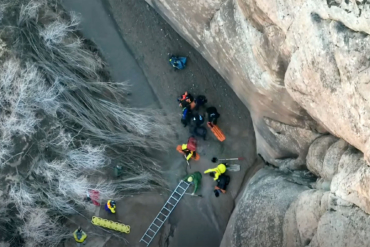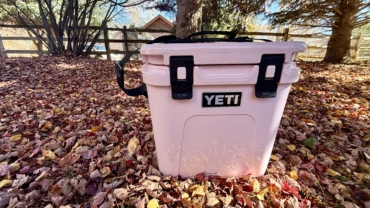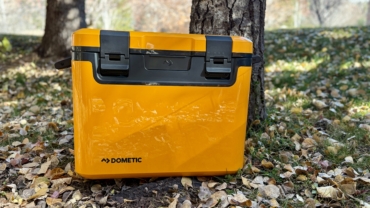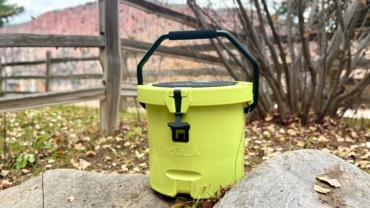Anyone who has tried (or failed) knows that starting a fire is often not as straightforward as it seems. And it can be especially difficult if you’re dealing with wet wood, a lack of materials, or limited knowledge.
There are many ways to start a fire. But read on for a few common methods, common mistakes, and tools that you should keep with you on all your future camping trips.
Also, please check with your local land management agency for current burn bans or fire restrictions. In many areas, fires are not allowed during the hottest and driest months. Sparks from a campfire — even a controlled one — can cause a forest fire, putting ecosystems and lives at risk.
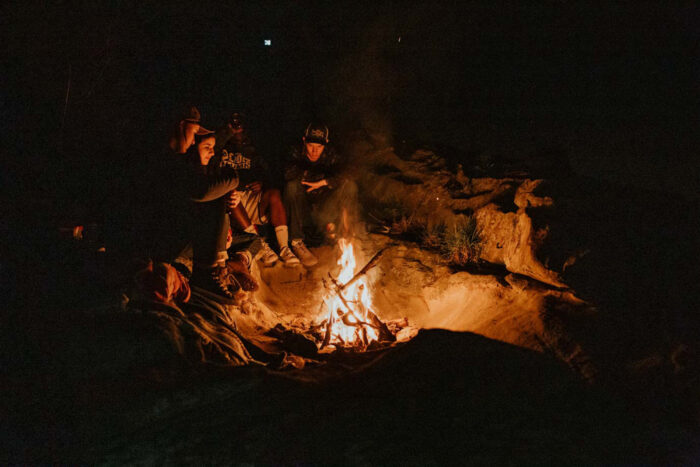
How to Start a Fire
Choose Your Location
Find an established fire pit if at all possible. If you’re not in an area with a fire pit, make one out of large rocks. Make sure the area where you plan to build your fire is not under any trees or near any tall grasses.
Contain your fire as much as possible. This will also ensure that any sparks or embers fall far from anything flammable. Make sure to clear out the bottom of your pit to remove any old ashes or vegetation. Ideally, the bottom of your fire pit should be sand or gravel.
Gather Materials
To start a fire, you need a hatchet for splitting wood, firewood, kindling, tinder, and an ignition source. Try to find wood local to where you’re building the fire. Moving wood more than 50 miles can bring tree-killing insects and diseases to the area.
Choose a hardwood such as maple, oak, or ash, which will help your fire burn cleaner, hotter, and longer. If foraging for wood, find dead and downed branches. Never cut branches from living or dead trees. (You also want to make sure to follow National Forest or wilderness protected rules — if gathering firewood is restricted or illegal; and also, not to gather firewood on closed or private property.)
Tinder material is made of the smallest pieces of wood. Find twigs that are smaller than the width of a pencil. Or, use a knife to shave off bits of a larger piece of wood. You can also use dryer lint, paper, cotton balls soaked in petroleum jelly, or commercial firestarters as tinder.
Kindling is the next size up from tinder. Look for pieces of wood that are about one-eighth to half an inch in diameter. Make sure that your kindling is as dry as possible, as this is what will help start the fire.
The last thing you need to start a fire is an ignition source. This could be a lighter, matches, or anything that will produce a spark. Certain types of matches are weatherproof, a good option if you expect to be building a fire in stormy conditions.
Build the Fire
There are many options for the structure of your fire. Here are a few options:
- The cone: This style of campfire involves creating a cone shape of wood around your tinder and kindling. First, lay down your tinder in the center of the fire pit. Arrange your kindling upright in a cone shape around the tinder. Next, layer your firewood in a cone shape around the kindling. When you light the tinder, it will burn upward and light the kindling, and then the firewood. This is a fast-burning style of fire, making it ideal for warming up quickly or cooking food.
- The log cabin: This style of campfire involves laying your tinder and kindling in the middle of the fire pit. On either side, lay two larger logs. Then, on top of those logs, lay two more perpendicular logs to form a square. Continue stacking logs perpendicularly in layers to create a log cabin-style structure. This structure allows for plenty of airflow, creating a slow-burning fire.
- The lean-to: This is a great structure for cooking or for when it’s windy. Lay a large log in the fire pit. Then, put your tinder next to the log, on the side where it’s protected from the wind. Set your small kindling sticks over the tinder, resting them on top of the large log on one side, and the ground on the other. This will help you start the fire gradually, with the tinder igniting the kindling, which will then burn the larger log. Then, you can add larger pieces of wood to build your fire slowly.
Light Your Fire

Make sure to light the tinder first. If you have built your fire correctly, the tinder should catch the kindling on fire, which light the larger logs on fire. You may need to use a piece of paper or a long match to reach some of the tinder.
If your fire is having a hard time getting going, applying a burst of oxygen can be a big help. Blow on the lit tinder gently but firmly, in a continuous stream. Some people use hollow plastic tubing to reach difficult areas more easily.
As the fire begins to burn, rearrange your kindling or firewood if necessary. Wait until you have a solid flame before adding larger pieces of wood. Once the fire is going strong, sit back and enjoy.
Put the Fire Out
Always make sure to put out your fire completely before walking away. Whenever possible, allow the wood to completely burn down to ash or embers. An easy way to put out a fire is to pour enough water on it to extinguish it.
Then, stir the coals to make sure there are not any embers or hot coals hiding. Finally, add more water on top. Be careful of the hot steam — it can burn you.
If you don’t have water, you can stir dirt or sand into the embers with a shovel to bury the fire. No matter which method you use, make sure all material is cool, and there are no remaining embers before you leave the fire pit.
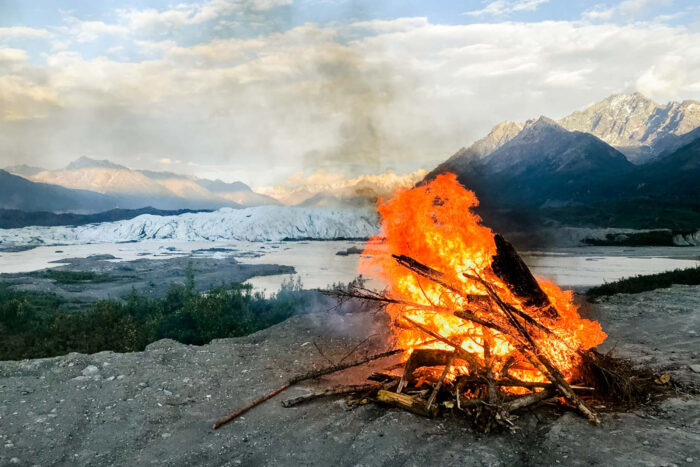
Frequently Asked Questions: How to Start a Fire
How do I start a fire if the wood is wet?
Wood is typically dry on the inside, even if it’s soaking wet on the outside. Use a knife or hatchet to cut off the outside of the wood or splinter some of the wood into small pieces. Small pieces will dry out faster and burn better. Look for dead wood underneath dense evergreen trees. The canopy of these trees can often keep the downed branches beneath them drier than the surrounding woods.
Once you get a fire going, lay the wet logs close to the flames to dry out.
How do I start a fire without a lighter or matches?
There are many ways to start a fire without a lighter or matches. They are all more complicated, and some involve other materials. Using a flint and steel is a classic way to produce a spark. Make sure you also have something to carry a smoldering spark to your tinder.
Another way to start a fire without matches is to use friction. A hand drill or a bow drill rubs two pieces of wood together until they start to smoke, and eventually spark. Have a nest of tinder ready, and once you have an ember, blow on it until the tinder starts to burn.
Both these techniques require long practice, patience, and the correct materials.



